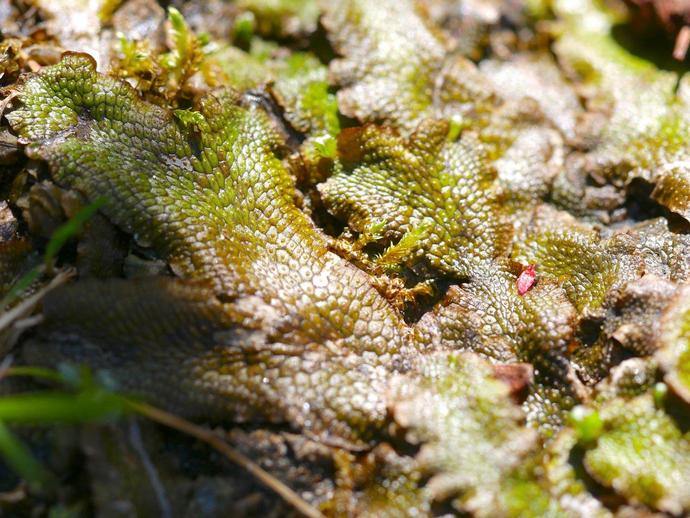April 30, 2021
It's time for today's edition of #BenInNature presented by our friends at Carter Bank & Trust!
Let's close out the week with a cool plant with an unappealing name: liverwort!
Liverworts belong to the division Marchantiophyta, and there are about 8,000-9,000 different species, so we'll just leave this one at "liverwort" and move on. Liverworts sort of resemble a flattened moss, and they're one of our most ancient plants. They began as algae that transitioned to land during the Devonian Era about 400 million years ago, long before dinosaurs roamed the Earth. In fact, there is some debate among biologists as to whether liverworts are their own separate family of plants that split off from everything else hundreds of millions of years ago, or whether they're the ancient ancestors of pretty much all other plants.
One thing is for certain: liverworts do things a little differently. While most plant leaves have veins that conduct water and nutrients throughout the leaf, liverworts ... don't. They also don't have stomata, which are sort of like little portholes that tree leaves have which close if the leaf is in danger of drying out. As a result, liverworts prefer wet, shaded areas. Additionally, these primitive plants don't have roots in the traditional sense; instead, they have simple structures called rhizoids that anchor them in place.
So why is liverwort called liverwort? Hundreds of years ago, it was believed that liverwort could cure diseases of the liver, a belief which likely arose because the pattern of the plant sort of resembles the pattern you see if you cut open a liver (at least according to folks hundreds of years ago). As it turns out, liverwort can't cure diseases of the liver, and beyond its ability to reduce erosion along the banks of waterways, it doesn't really have any economic utility for us humans. Nonetheless, we should respect our elders, and they don't come much more elderly than liverwort!
ABOUT #BenInNature
Social distancing can be difficult, but it presents a great opportunity to become reacquainted with nature. In this series of posts, Administrator of Science Ben Williams ventures outdoors to record a snapshot of the unique sights that can be found in the natural world. New updates are posted Monday - Friday, with previous posts highlighted on the weekends. This series of posts is made possible thanks to the support of VMNH Corporate Partner Carter Bank & Trust (www.cbtcares.com).
NATURE PHOTO IDENTIFICATIONS
If you discover something in nature that you would like help identifying, be sure to message us right here on Facebook with a picture (please include location and date of picture) and we'll have our experts help you identify it!

 Hours & Admissions
Hours & Admissions Directions
Directions

